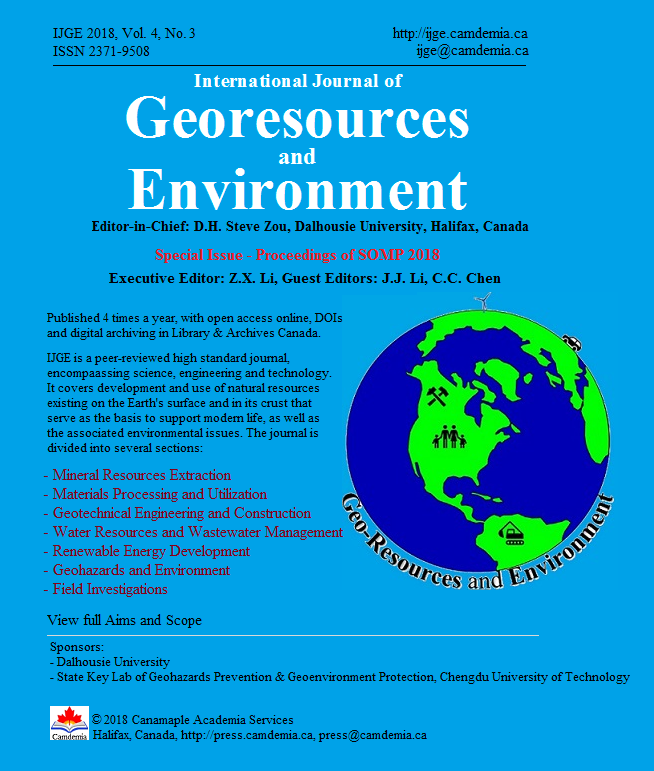A Framework of Safety Training Based on Augmented Reality and Cloud Computing Platform in Mines
DOI:
https://doi.org/10.15273/ijge.2018.03.014Keywords:
augmented reality technology, cloud computing platform, mine safety, interactive system, safety trainingAbstract
As the harsh environment of mines and complicated production processes may easily cause safety production accidents, safety training becomes one of the important ways to reduce personal injuries and property damages. Safety training and education have formed a set of standardized system in the mining enterprises, however, there are still many problems in the operation process of safety training. In order to solve these issues, Augmented Reality (AR) could be used in the traditional safety training based on the comparative analysis of the differences between traditional training and augmented reality-based training. A novel safety training framework is proposed based on AR and Cloud Computing (CC) platform. This framework chooses marker-based AR technology as the research method combined with CC platform for its multiple functions, large-scale and high reliability. Several modules are designed in this framework, which includes mine basic knowledge, equipment cognitive module, intelligent maintenance module, standardized operation module, remote help module, collaborative work module, capability assessment module as well as other functional modules. This framework also achieves the functions such as user registration and login, role management, safety knowledge production training, practical training and periodic assessment functions based on augmented reality. The basic knowledge of mines module is a comprehensive class which contains all the training classes and the regulations to enhance knowledge standard of workers. The equipment cognitive module aims to enhance the employee's mastery of the device. The standardized operation module and intelligent maintenance module utilizes the marker-based AR to improve the technical proficiency of actual practices and skills. The ability assessment module can judge the worker‘s quality of his work in mines. The background management module is designed for the system administrators to maintain the system and data on cloud platform. In this safety training system, the equipment profile, operating procedures and other training knowledge can be displayed in a more intuitive form. And the abstract training concepts are visualized and interactive. This safety training system can merge the training with the actual operation to improving training efficiency. In this way, it can break through the limitation of safety training methods, time, location, etc. in the traditional safety training. Moreover, it can increase employees understanding of theoretical knowledge and proficiency in operational skills. The AR and CC based training system can not only be used in mines, but also can be designed according to different needs of the corresponding system. It would have significant influence of practice and application to the universities, enterprises, government departments and other fields.
Downloads
Published
Issue
Section
License
Copyright, Terms and Conditions
The International Journal of Geohazards and Environment (the Journal) is published by Canamaple Academia Services (the Publisher) online with open access, under a Creative Commons Attribution-Noncommercial license (CC-BY-NC) (http://creativecommons.org/licenses/by-nc/4.0/). Authors (the Authors) submitting papers (the Work) for publication in the Journal automatically agree to the following terms and conditions.
1. Under the license (CC-BY-NC), Authors give permission for others to share and reuse the Work, as long as the original source and author(s) are properly cited (i.e. a complete bibliographic citation and link to the Journal website) and the material is not used for commercial purposes. Any sharing or reuse must however indicate the original CC-BY-NC license terms of the work.
2. Authors transfer and assign to the Publisher all copyright in and to the Work. However Authors retain all proprietary rights except the copyright, related to the Work and also retain the rights a) to use, reproduce, distribute, and publicly display the Work in any medium in connection with the Authors‘ academic and professional activities, such as teaching, presentations and lectures, b) to create derivative works from the Work and to make full use of the Work in future research and publications, c) to authorize others to make any non-commercial use of the Work, d) to make both the pre-published and final-published versions available online in institutional and/or disciplinary repositories or on their own websites with a citation and link to the original paper published in the Journal.
3. Authors warrant that the Work is their original work, it is not copied from anywhere or anyone else, they are totally responsible for the authenticity, originality, validity and accuracy, and the facts and views are their own, that the Work contains no matter which is defamatory or infringes any literary or proprietary rights, intellectual property rights, or any rights of privacy, and that the Work has not been simultaneously submitted to any other journals or publishers. Authors further agree that their manuscripts whether accepted or rejected will not be returned and the rejected manuscripts will be disposed at the journal editor's discretion.
Disclaimer: The Publisher, the Journal and the editors accept no responsibility for statements or opinions expressed by authors. Use of information and materials in the Journal is the sole responsibility of users.


